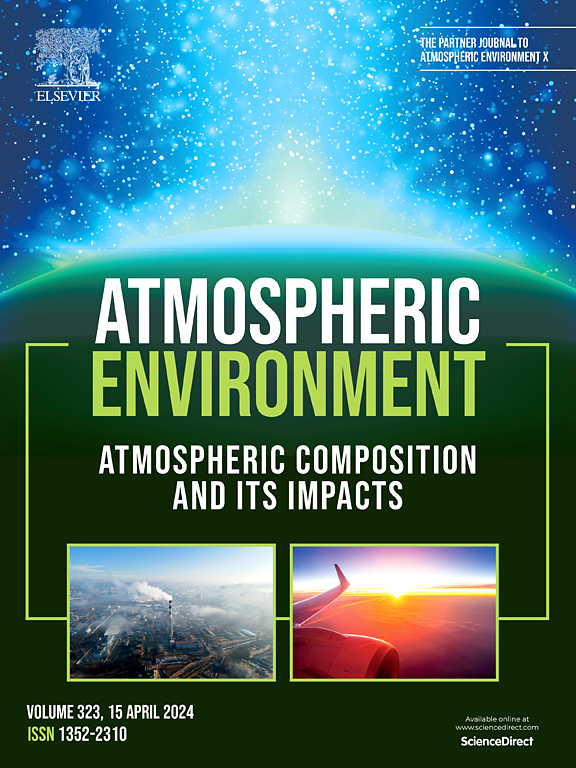南非高原多年汞浓度测量评估:2016-2023年选定数据集的案例研究
IF 4.2
2区 环境科学与生态学
Q2 ENVIRONMENTAL SCIENCES
引用次数: 0
摘要
汞(Hg)是一种对全球所有地区都有不利影响的污染物。本研究调查了气态元素汞(GEM),汞的主要形式,自2009年以来在南部非洲高原区优先区(SAHPA)发生的变化。南水北调区域是南非空气质量方面值得关注的区域之一,因为该区域经常出现污染物浓度超过该国规定阈值的情况。本研究在Elandsfontein(一个受工业/人为影响的SAHPA监测点)测量了2016年至2023年期间GEM浓度和其他南非标准污染物和气象参数。根据质量控制程序,在2016年和2019年的一些数据以及2017年和2018年的所有数据中发现了重大跳跃和变化,这些数据被排除在分析之外。监测期间,Elandsfontein的GEM平均小时浓度范围为0.10 ~ 71.22 ng/m3,平均浓度为1.74±1.62 ng/m3。观测到的GEM平均浓度具有明显的季节特征,冬季(1.94±2.00 ng/m3)、春季(1.83±1.85 ng/m3)、秋季(1.79±1.1.55 ng/m3)和夏季(1.48±1.08 ng/m3)最高。在Elandsfontein, GEM的日变化具有明显的规律,其浓度在日出前达到峰值,在傍晚下降。高GEM浓度(6 ng/m3)与来自西部内陆的气团有关,表明当地有大量的排放。污染事件在2016-2023年的7月至10月达到峰值,可能是由于干旱季节国内燃料燃烧和生物质燃烧增加,导致大气污染物水平升高。混合单粒子拉格朗日综合轨迹(HYSPLIT)分析显示,东部气团主要是“清洁的”和来自海洋的,强调了该地点周围的本地和区域GEM排放的重大影响。这些发现突出了气象和污染物排放在形成GEM水平方面的复杂相互作用。需要进一步研究以更好地了解GEM变化如何受到与其他污染物、气象学、卤素和臭氧相互作用的影响,特别是在南半球。本文章由计算机程序翻译,如有差异,请以英文原文为准。
Assessment of multi-year mercury concentration measurements over the South African highveld: a case study of 2016–2023 selected dataset
Mercury (Hg) is a pollutant that adversely affects all regions worldwide. This study investigates how Gaseous Elemental Mercury (GEM), the predominant form of Hg, has changed over the Southern African Highveld Priority Area (SAHPA) since 2009. The SAHPA is one of the regions of interest regarding South African air quality, given its frequent and recurrent occurrence of pollutant concentrations exceeding the country's prescribed thresholds. The present study measured GEM concentrations and other South African criteria pollutants and meteorological parameters between 2016 and 2023 at Elandsfontein, an industrially/anthropogenically influenced monitoring site on the SAHPA. Following quality control procedures, major jumps and shifts were noticed in some of the data for 2016 and 2019, as well as all of the 2017 and 2018 data, these data were excluded from the analysis. The mean hourly GEM concentrations during the monitoring period at Elandsfontein ranged from 0.10 to 71.22 ng/m3 with a mean concentration of 1.74 ± 1.62 ng/m3. The observed mean GEM concentrations exhibit characteristic seasonal patterns, with the highest levels in winter (1.94 ± 2.00 ng/m3), spring (1.83 ± 1.85 ng/m3), autumn (1.79 ± 1.1.55 ng/m3), and summer (1.48 ± 1.08 ng/m3). The diurnal variation of GEM at Elandsfontein shows a distinct pattern, with concentrations peaking before sunrise and dipping in the late afternoon. High GEM concentrations (>6 ng/m3) are linked to air masses from the western interior, indicating significant local emissions. Pollution events peak between July and October 2016–2023, likely due to increased domestic fuel combustion and biomass burning during the dry season, contributing to elevated atmospheric pollutant levels. An Hybrid Single-Particle Lagrangian Integrated Trajectory (HYSPLIT) analysis showed that eastern air masses were predominantly ‘clean’ and ocean-derived, emphasising the significant influence of local and regional emissions of GEM surrounding the site. These findings highlight the complex interaction of meteorology and pollutant emissions in shaping GEM levels. Further research is needed to understand better how GEM variations are influenced by interactions with other pollutants, meteorology, halogens, and ozone, particularly in the southern hemisphere.
求助全文
通过发布文献求助,成功后即可免费获取论文全文。
去求助
来源期刊

Atmospheric Environment
环境科学-环境科学
CiteScore
9.40
自引率
8.00%
发文量
458
审稿时长
53 days
期刊介绍:
Atmospheric Environment has an open access mirror journal Atmospheric Environment: X, sharing the same aims and scope, editorial team, submission system and rigorous peer review.
Atmospheric Environment is the international journal for scientists in different disciplines related to atmospheric composition and its impacts. The journal publishes scientific articles with atmospheric relevance of emissions and depositions of gaseous and particulate compounds, chemical processes and physical effects in the atmosphere, as well as impacts of the changing atmospheric composition on human health, air quality, climate change, and ecosystems.
 求助内容:
求助内容: 应助结果提醒方式:
应助结果提醒方式:


